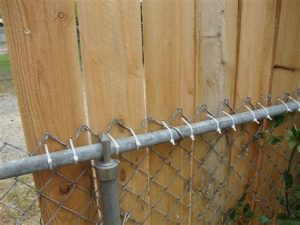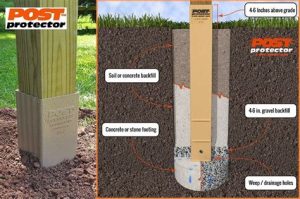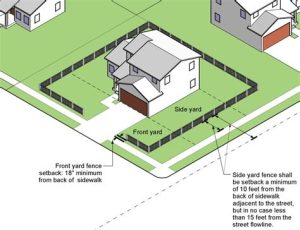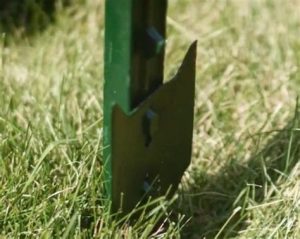Learn how to build a fence by assessing weather conditions, selecting materials, preparing the ground, using proper tools, and ensuring ongoing maintenance.When it comes to installing a fence, the weather can often throw a wrench in the plans—especially when rain is in the forecast. However, with the right approach, you can still achieve a sturdy and aesthetic fence even during wet conditions. In this blog post, we’ll explore how to tackle the installation process effectively by assessing weather conditions, selecting the right materials, and preparing the ground properly. We’ll also cover the essential tools and techniques to ensure a successful installation, even when the skies are cloudy. Finally, we’ll touch on the importance of monitoring and maintaining your fence to withstand the elements for years to come. Whether you’re a DIY enthusiast or a seasoned pro, this guide will equip you with the knowledge to navigate the challenges of fencing installation in the rain.
Assessing the Weather Conditions
When it comes to installing a fence, the first step begins with carefully assessing the weather conditions. Rain may seem like a minor issue, but it can significantly affect the installation process and the overall durability of your fence.
This assessment involves checking the current weather forecasts and understanding how precipitation can impact both the ground conditions and the materials being used. For instance, wet soil can lead to muddy conditions, which can hinder the digging process, whereas heavy rain can lead to erosion and instability.
Additionally, knowing the expected duration of rain allows you to plan for drying time before you begin the actual installation. It is essential to choose a window when rainfall is minimal to ensure you have a better working environment.
Selecting the Right Materials
When it comes to installing a fence, especially during rainy weather, choosing the right materials is essential to ensure durability and stability. Rain can affect the integrity of certain materials, so it’s crucial to select those that can withstand moisture and prevent damage.
Materials such as vinyl and composite fencing are great options for rainy conditions because they are resistant to rot and corrosion. On the other hand, if you opt for wood, consider using pressure-treated lumber or cedar, which are both more resistant to water and can withstand wet environments better than other types of wood.
Additionally, ensure that any metal components, like posts and fittings, are made of galvanized steel or other corrosion-resistant alloys.
Preparing the Ground
When it comes to installing a fence during rain, ensuring the ground is properly prepared is crucial. Wet conditions can complicate the installation process, making it essential to take specific measures to set a solid foundation. This process begins with assessing the moisture level of the soil to gauge how workable it is for digging.
One effective method is to use a shovel or post-hole digger to test the soil’s consistency. If the ground is overly saturated, it may be better to postpone installation until the rain subsides. However, if you find that the soil can be manipulated without becoming too muddy, it’s time to get started. Additionally, removing any debris or roots from the proposed fence line will make the installation much smoother.
Another key point is to consider drainage. When preparing the ground, plan for how water will flow around the fence posts. Creating small trenches or using gravel can help direct water away from the base of the fence, enhancing its longevity. Ultimately, thorough preparation of the ground is vital for ensuring your fence stands strong, even in the face of persistent rain.
Utilizing Proper Tools and Techniques
When it comes to installing a fence during rain, using the right tools and techniques is crucial for ensuring a successful installation. Wet conditions can make the ground slippery and challenging to work with, so having the proper equipment will enhance safety and efficiency.
Consider investing in high-quality waterproof materials that are designed to withstand moisture. Additionally, it’s important to have tools that can handle wet conditions effectively.
- Shovel: A durable, rust-resistant shovel is essential for digging post holes.
- Post Level: Ensures that each fence post is vertically aligned even in muddy or soaked conditions.
- Power Drill: Useful for quickly securing panels or posts, even in adverse weather.
- Rubber Gloves: Protects your hands from moisture and sharp tools.
Another technique to consider is to work during light rain rather than waiting for the weather to clear entirely. Light rain often provides ideal conditions for soil manipulation, making it easier to set posts. Remember to space out your work to allow for excess water to drain away, preventing erosion and soft ground around your new fence.
Proper techniques include firmly securing posts in place by using gravel or quick-setting concrete which can help stabilize them immediately, despite wet conditions. Always ensure safety first by wearing appropriate non-slip footwear to avoid falls on wet ground.
Monitoring and Maintaining the Fence
Once your fence has been installed, regular monitoring and maintenance are essential to ensure its longevity and effectiveness. Weather conditions can change rapidly, especially after a rain installation, making it crucial to keep a close watch on any potential issues.
Start by inspecting the fence for any visible damage, such as warping, rust on metal components, or signs of rot in wooden areas. Look closely at joints, screws, and other fixtures that may become loose over time. Regular checks enable you to catch problems early before they turn into costly repairs.
Additionally, consider the impact of moisture on your fence. If you’ve installed a wooden fence, applying a weatherproof sealant after installation can help protect it from water damage. For metal fences, ensure that there’s no accumulation of debris around the base that can trap moisture and promote rust.
Frequently Asked Questions
Is it advisable to install a fence during rain?
While it’s possible to install a fence during rain, extreme weather can affect the process and quality of the installation.
What materials are best for fence installation in wet conditions?
Pressure-treated wood, vinyl, and composite materials are more resilient in wet conditions compared to untreated wood.
How does rain affect the digging of post holes?
Rain-soaked soil can be easier to dig, but excessive water can lead to muddy conditions that make it difficult to achieve proper alignment and stability.
Should I wait for the rain to stop before installing my fence?
If the rain is light and intermittent, installation may proceed, but heavy rain typically warrants postponing for better results.
What precautions should be taken if installing a fence in the rain?
Using tarps to cover materials, ensuring proper drainage, and checking weather forecasts for severe conditions are essential precautions.
Can rain affect the curing of concrete for fence posts?
Yes, heavy rain can wash away concrete mix or weaken the bond; it’s best to avoid pouring concrete during heavy rain.
What are the risks of installing a fence during wet weather?
Risks include poor soil stability, improper leveling or settling of posts, and potential damage to materials, which could lead to a compromised fence structure.





